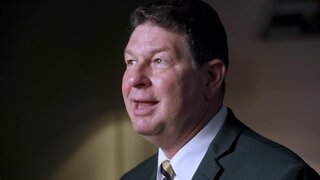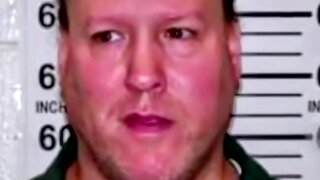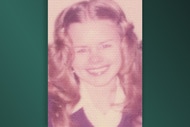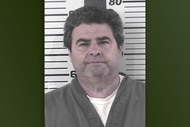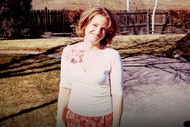After Doctor Claims a Man Died in His Office, Cops Uncover a Murder and $1 Million Insurance Scam
Ellis Henry Greene had a dream of opening a bakery in Los Angeles, but he fell into the clutches of three men willing to murder for money.
On April 16, 1988, police in Glendale, California faced a case with more twists than a big-screen thriller.
Dr. Richard Boggs told detectives that his patient, Melvin Eugene Hanson, 46, had called complaining of chest pains. Around 5 a.m., they met at the doctor's office, where Boggs said Hanson died.
RELATED: Bite Mark on Slain Nurse's Arm Leads to Scorned LAPD Detective 23 Years After the Murder
Police grilled Boggs about why he didn’t tell Hanson to go to an emergency room. He told them Hanson “only trusted me,” investigative reporter Michael Fleeman told The Real Murders of Los Angeles, airing Fridays at 9/8c on Oxygen.
Why was Melvin Hanson's purported death at doctor's office deemed suspicious?
Hanson had no photo ID on him at the time of his death, but his credit cards and birth certificate were in his wallet. Investigators noted that it was strange to carry a birth certificate. “The police department felt that there were suspicious circumstances surrounding the death,” said Craig R. Harvey, a retired chief of investigations for the County of Los Angeles Department of Medical Examiner-Coroner.
After a cursory search for signs of injection sites or strangulation, Harvey concluded that Hanson likely died of natural causes. But the advanced state of rigor mortis made him question how long Hanson had been dead.
Police went to Boggs’ apartment to listen to Hanson’s message left on the doctor’s answering machine, according to Moses Castillo, a retired detective supervisor with the Los Angeles Police Department. A 3:30 a.m. call from Hanson backed up the doctor’s statements.
On April 18, an autopsy concluded that Hanson died of nonspecific focal myocarditis, an inflammation of the heart muscle, according to Harvey. The case was closed as a death by a natural cause.
Authorities had reached out to Hanson’s emergency contact, John Hawkins, who lived in Columbus, Ohio. Hawkins flew to L.A. right away.
He told investigators that Hanson grew up in Florida and moved to California, where he worked in an upscale department store. The men met in 1981. Hawkins was 18 at the time, while Hanson was two decades older. “They became romantically involved,” said Castillo.
After the love affair ended, their friendship endured and became a business partnership. They launched Just Sweats, a workout clothing line. Their flagship shop was in Columbus, Ohio.
“By 1987, two years later, they've got 22 outlets and $10 million in revenue,” said Fleeman. But in late 1987, Hanson informed co-workers that he had a life-threatening heart condition. In April 1988, Hanson was apparently dead.
Less than 24 hours after the autopsy report came out, Hawkins had Hanson’s body cremated, per instructions in Hanson’s will. He returned to Ohio, according to Robin Yocum, co-author of Insured for Murder.
In mid-July, Glendale police learned from an insurance adjuster that Hawkins was the beneficiary of Hanson’s $1 million life insurance policy.
Dead body misidentified as Melvin Hanson
The insurance adjuster had a DMV photo of Hanson and wanted a picture of the person who’d died in Boggs’ office. Glendale police sent a photo of the man from Boggs’ office. The men in the photographs were not the same person.
L.A. detectives determined that fingerprints of the deceased man didn’t match Hanson’s fingerprints on file, according to Yocum.
“We don't know if this is mistaken identity, a paperwork snafu, fraud. Who knows,” said Fleeman.
A task force from the coroner’s office was formed to identify the dead man. Detectives used fingerprints, which was time-consuming. “In 1988, the databases were not interlinked,” Harvey explained.
The task force worked with State of California's insurance fraud investigators. They searched missing-persons reports made around April 16, 1988.
Boggs steadfastly maintained that he believed the man who died in his office was Hanson. Was the doctor lying? Had his patient been posing as Hanson for years?
Hawkins, meanwhile, had gone missing. The case had turned into a major fraud investigation.
Body in doctor's office was Ellis Henry Greene
In September 1988, investigators working the missing-persons angle turned up a lead. Ellis Henry Greene, 32, lived in the Glendale area — and had disappeared about five months earlier.
Greene’s aunt identified the photo of the corpse as that of her nephew. Greene’s fingerprints on file from military service corroborated that.
Investigators learned that Greene had dreams of opening a bakery. After moving to L.A. in 1985, he was eking out a living and drinking heavily. In 1988, he was helping out with paperwork for a friend who did tax returns.
Detectives learned that Greene told friends that he had met two men in a bar who expressed interest in investing in his bakery.
“On April 15, 1988, Ellis tells his friend that these two friends are going to meet at another bar,” said Fleeman. The next day, the body turned up in Boggs’ office.
As the case went on, the insurance company that paid out the $1 million was keen on getting the money back. They hired Dino Tripodis, then a private detective, to track down Hawkins.
On September 17, 1988, Tripodis spoke with Hawkins’ roommate, Erik De Sando. “The roommate says that John is a great scam artist,” said Tripodis.
“Erik revealed to me that John Hawkins admitted that [Melvin Eugene] Gene Hanson was still alive,” added Tripodis.
Business partners and doctor conspire to collect insurance payout
As it turned out, Hanson faked his death to share in the insurance payout. Tripodis shared that information with police.
“The theory behind the case now is that Hanson and Hawkins tried to pull off a monster insurance scheme and, in the process, likely murdered Ellis Greene,” said Fleeman.
Detectives learned that Boggs, who was married but leading a secret gay life, faced serious professional financial issues, according to The Real Murders of Los Angeles.
“The story from John Hawkins to Erik was that Dr. Boggs was going to find a body that looked like Gene Hanson from a private morgue,” said Tripodis. “There was no initial plan to murder anybody, but that didn't work out.”
RELATED: "High Priest of Silent Cinema" Killed in Business Partner's Murder-For-Hire Plot
Investigators believed that Greene was murdered and his body passed off as Hanson, according to The Real Murders of Los Angeles.
On January 9, 1989, a man behaving suspiciously at Dallas Fort Worth International Airport turned out to be Hanson. He was carrying $16,000 in cash and numerous IDs, including one belonging to Greene.
Police caught a key break when they were are able to connect Hanson, Hawkins and Boggs through phone calls at the time of the murder, according to Fleeman.
Boggs was arrested for murder, conspiracy, insurance fraud and other charges. His trial began in May 1990.
How did Ellis Henry Greene die?
Prosecutors asserted that Hanson and Boggs brought an intoxicated Greene to Boggs’ office and murdered him, according to investigators. It’s believed that Greene may have been smothered.
Richard Boggs, Melvin Hanson, John Hawkins go on trial
The elaborate insurance-scam plan for a payout followed. Boggs was convicted of murder for financial gain, conspiracy to commit murder, insurance fraud, and other felony charges. He was sentenced to life without parole.
In July 1991, Oprah Winfrey did a show about America’s Most Wanted. A photo of Hawkins was shown. A tip came in from a woman in Amsterdam who was dating a man who claimed to be a Canadian businessman.
She was sure it was Hawkins. She told investigators her new boyfriend had a skin condition “on his most private of parts,” said Yocum, adding that authorities never released that information.
RELATED: Real Housewife Garcelle Beauvais to Narrate The Real Murders of Los Angeles This Fall
On August 2, 1991, Hawkins was arrested and extradited to the U.S. In April 1995, Hanson was tried for murder, and Hawkins, who was in Ohio when Greene was killed, for conspiracy.
Hanson was convicted and sentenced to life without parole. Hawkins was found guilty and sentenced to 25 years.
Boggs died in prison in 2003. Hanson died in prison in 2016. After serving 20 years, Hawkins was released in 2012.
To learn more about the case, watch The Real Murders of Los Angeles, airing Fridays at 9/8c on Oxygen.


